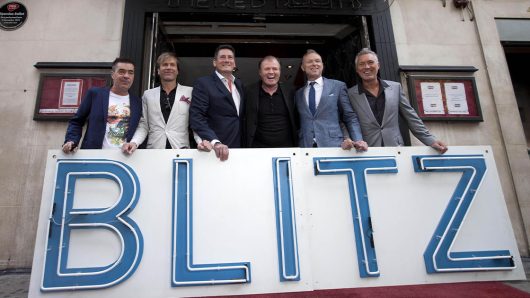After their fourth album, Stars, became the bestselling record of both 1991 and 1992, Simply Red rounded off a world tour shining as brightly as a supernova. Brimming with confidence, frontman Mick Hucknall had once again asserted his place among the ranks of pop’s leading lights and was feeling ready to assume more artistic control over the group’s musical direction.
Listen to ‘Life’ here.
“I wanted ‘Life’ to be my masterpiece”
With the band enjoying a well-earned two-year break, Hucknall took his time in considering how to tackle the unenviable task of following a record that had gone 30-times platinum in Europe. Buzzing with ideas about where to take Simply Red’s next record, the singer looked to the dance music still fizzing away in clubland, while the emergence of 90s hip-hop also provided him with further inspiration. But there were challenges to overcome.
Having scored the biggest album of their career so far, Simply Red’s whirlwind success had taken its toll on the group. Gota Yashiki – the drummer who had been instrumental in transforming the band’s sound on Stars – had moved on to solo projects, leaving Hucknall and the core three-piece of Fritz McIntyre on keyboards, Ian Kirkham on saxophone and Heitor TP on guitar. The group’s long-term producer, Stewart Levine, was also absent at the start of the Life recording sessions, though this gave Hucknall, who felt he’d served his apprenticeship under the producer, a chance to step forward and shape the record’s sound himself.
The band began recording Life at Planet 4 Studios in Manchester, in September 1994. Hucknall’s songwriting was on stellar form as always, but it soon became clear that his musical ambitions were growing once again. “I wanted Life to be my masterpiece,” the singer later admitted. To help streamline Hucknall’s efforts, Stewart Levine was eventually drafted in as co-producer, and the sessions moved to AIR Studios, in London, and Downtown Studios in Johannesburg. “I didn’t think he had to worry about being trendy,” Stewart Levine later recalled. “He had this fantastic voice, and that’s what put him there.”
“I wanted it to be seen as me strolling through life”
Released on 18 September 1995, the album’s carnival-esque lead single, Fairground, introduced the public to a new-look Hucknall. In the song’s music video, directed by Michael Geoghegan and filmed at Blackpool Pleasure Beach, the Simply Red frontman sported flowing ginger dreadlocks and jumped on a rollercoaster to dive head-first into electronic dance music. With euphoric Latin-flavoured percussion adding extra flavour, the song was a timely product of 90s sample culture (guest keyboardist Andy Wright had seen The Goodmen perform their 1993 Top 5 hit, Give It Up, on Top Of The Pops and suggested Fairground could be built around its samba-style beats). An instant success, the single would go on to sell 783,000 copies, and still holds the accolade for becoming the band’s sole UK No.1.




